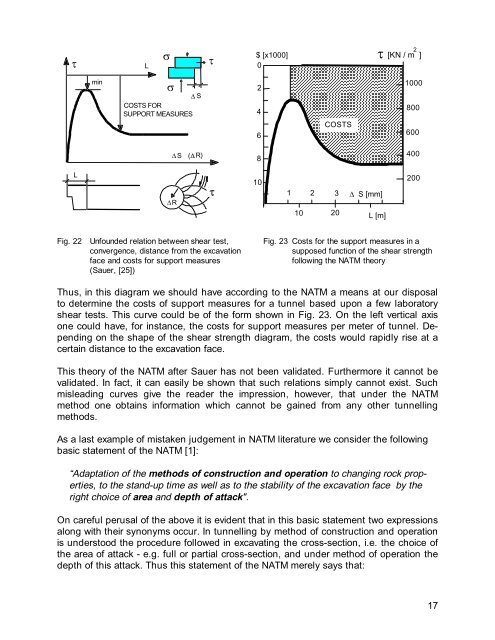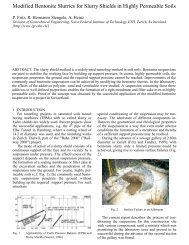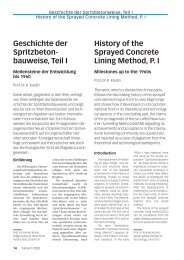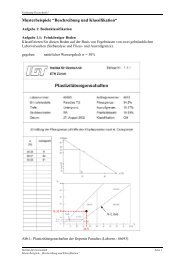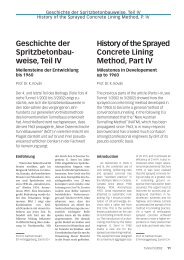Erroneous Concepts behind NATM
Erroneous Concepts behind NATM
Erroneous Concepts behind NATM
Create successful ePaper yourself
Turn your PDF publications into a flip-book with our unique Google optimized e-Paper software.
W<br />
L<br />
min<br />
L<br />
V<br />
V<br />
' S<br />
COSTS FOR<br />
SUPPORT MEASURES<br />
' S<br />
'R<br />
( ' R)<br />
W<br />
W<br />
$ [x1000]<br />
0<br />
2<br />
4<br />
6<br />
8<br />
10<br />
COSTS<br />
1 2 3<br />
10 20<br />
' S [mm]<br />
2<br />
W [KN / m ]<br />
Fig. 22 Unfounded relation between shear test, Fig. 23 Costs for the support measures in a<br />
convergence, distance from the excavation supposed function of the shear strength<br />
face and costs for support measures following the <strong>NATM</strong> theory<br />
(Sauer, [25])<br />
Thus, in this diagram we should have according to the <strong>NATM</strong> a means at our disposal<br />
to determine the costs of support measures for a tunnel based upon a few laboratory<br />
shear tests. This curve could be of the form shown in Fig. 23. On the left vertical axis<br />
one could have, for instance, the costs for support measures per meter of tunnel. Depending<br />
on the shape of the shear strength diagram, the costs would rapidly rise at a<br />
certain distance to the excavation face.<br />
This theory of the <strong>NATM</strong> after Sauer has not been validated. Furthermore it cannot be<br />
validated. In fact, it can easily be shown that such relations simply cannot exist. Such<br />
misleading curves give the reader the impression, however, that under the <strong>NATM</strong><br />
method one obtains information which cannot be gained from any other tunnelling<br />
methods.<br />
As a last example of mistaken judgement in <strong>NATM</strong> literature we consider the following<br />
basic statement of the <strong>NATM</strong> [1]:<br />
“Adaptation of the methods of construction and operation to changing rock properties,<br />
to the stand-up time as well as to the stability of the excavation face by the<br />
right choice of area and depth of attack".<br />
On careful perusal of the above it is evident that in this basic statement two expressions<br />
along with their synonyms occur. In tunnelling by method of construction and operation<br />
is understood the procedure followed in excavating the cross-section, i.e. the choice of<br />
the area of attack - e.g. full or partial cross-section, and under method of operation the<br />
depth of this attack. Thus this statement of the <strong>NATM</strong> merely says that:<br />
L [m]<br />
1000<br />
800<br />
600<br />
400<br />
200<br />
17


